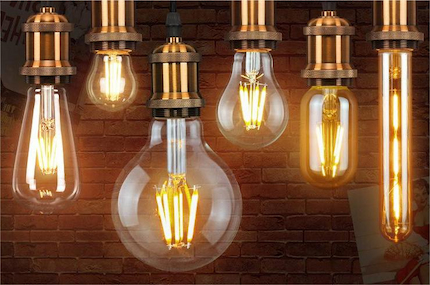Oct 12, 2023
Led (Light Emitting Diode) Lights Have Come a Long Way Since Their Inception. The Journey Of Their Development Spans Several Decades, Characterized By Continuous Innovation And Significant Advancements. Let's Delve Into The Fascinating History Of Led Lights And Explore How They Have Transformed The World Of Lighting.
1962: The Birth Of Leds
Led Lights Were First Developed In 1962 By Nick Holonyak Jr., a Researcher At General Electric. Holonyak Created The First Practical Visible-Spectrum Led Using Gallium Arsenide Phosphide (Gaasp) As The Semiconductor Material. This Red Led Paved The Way For Future Breakthroughs In Led Technology.
1970s-1980s: Expanding The Color Spectrum
In The 1970s And 1980s, Scientists Expanded The Color Range Of Leds Beyond Red, Uncovering The Potential For New Applications. They Developed Green, Yellow, And Amber Leds By Using Different Semiconductor Materials, Including Aluminum Gallium Arsenide (Algaas) And Gallium Phosphide (Gap). These Advancements Brought Leds Closer To Applications That Required a Broader Color Spectrum.
1990s: Blue Leds And The Nobel Prize
In The 1990s, Shuji Nakamura, Working At Nichia Chemical Industries In Japan, Made a Groundbreaking Discovery. Nakamura Developed Efficient Blue Leds Using Gallium Nitride (Gan) As The Semiconductor Material. This Achievement Was Particularly Significant Because Blue Light Emission Was Considered Challenging To Achieve In The Led Industry. Nakamura's Breakthrough Paved The Way For The Development Of White Leds And Revolutionized The Lighting Industry. In 2014, Nakamura Was Awarded The Nobel Prize In Physics For His Contributions.
Early 2000s: White Leds And Solid-State Lighting
White Led Lights Became Possible With The Combination Of Blue Leds And Phosphor Materials. When Blue Light Generated By An Led Chip Passes Through a Phosphor Coating, It Creates a Broader Spectrum Of Light, Including White Light. The Discovery Of White Leds Unlocked The Potential For Solid-State Lighting, Which Offered Numerous Advantages Over Traditional Incandescent And Fluorescent Lighting Technologies.
Advancements And Applications
In The Following Years, Led Technology Continued To Evolve Rapidly. Led Efficiency Improved, Leading To Higher Lumen Output Per Watt And Lower Energy Consumption. The Cost Of Led Production Decreased, Making Led Lights More Affordable For Consumers And Businesses. As a Result, Led Lights Found Widespread Application In Various Industries And Settings.
Led Lights Are Now Used Extensively For Residential And Commercial Lighting, Street Lighting, Automotive Lighting, Signage, Displays, And More. Their Long Lifespan, Energy Efficiency, Durability, And Environmentally Friendly Nature Have Made Them The Preferred Choice For Lighting Solutions Across The Globe.
Furthermore, Ongoing Research And Development Continue To Push The Boundaries Of Led Technology. Scientists And Engineers Are Exploring Advancements In Materials, Structure, And Design To Enhance Led Brightness, Color Quality, And Overall Performance.
The History Of Led Lights Is a Testament To Human Ingenuity And Perseverance. From Humble Beginnings As Red Leds In The 1960s To The Vibrant And Efficient Lights We Have Today, Led Technology Has Revolutionized The Lighting Industry. It Has Paved The Way For Energy-Efficient, Eco-Friendly, And Versatile Lighting Solutions That Continue To Evolve And Shape The Way We Illuminate Our World.
